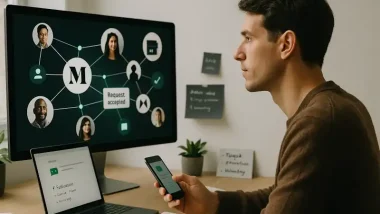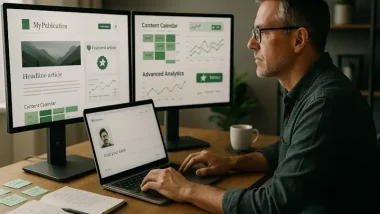Turning Attention Into Income
Medium isn’t just a place to write. It’s a place to earn. But the money doesn’t come from ads, affiliate clicks, or traditional monetization structures. It comes from attention—and more specifically, how much time Medium’s paying members spend reading what you write.
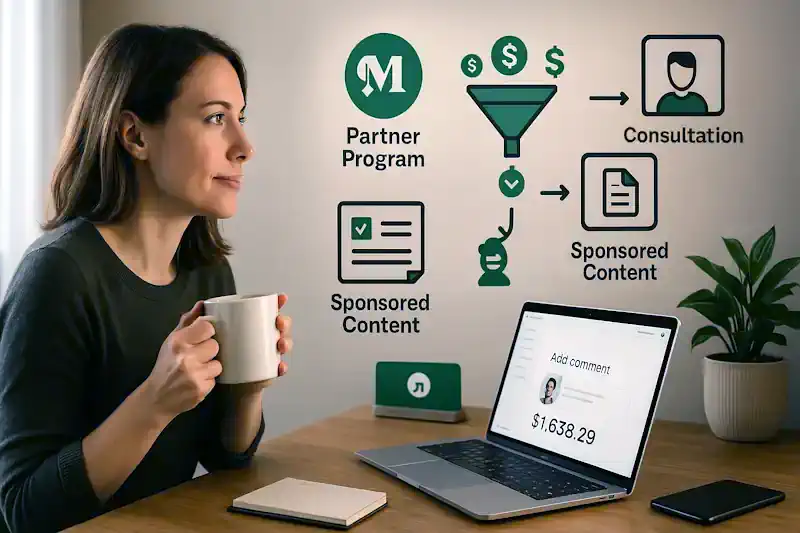
If you can hold someone’s attention and keep them scrolling through your article, you can turn that reading time into actual revenue. For entrepreneurs, creators, and experts, this makes Medium not only a writing platform but also a business tool.
You can earn directly through the platform or use it to grow the parts of your business that live off-platform. The key is understanding how each pathway works so you can make the most of it.
Inside the Medium Partner Program
The Medium Partner Program is the main way writers get paid directly. It’s open to anyone with a Medium account, but there are a couple of boxes you have to check first. You need at least one published story, and your account must meet the platform’s basic requirements, like agreeing to their rules and setting up payment details through Stripe.
Once you’re in, you can choose to put some or all of your articles behind the paywall. Only Medium members—those who pay $5/month for unlimited reading—can access those pieces. When they read your content, Medium tracks how long they stay, how deeply they engage, and how much of it they finish.
How Medium’s Payment System Works
This isn’t about clickbait or surface-level content. Views alone don’t pay. You get paid based on engagement. Medium calculates something called “member reading time,” and that’s the real currency here.
If a paying member reads two of your articles for a total of ten minutes, that reading time is what counts toward your payout. It’s a quiet system, but it favors depth over flash. A 4–7-minute article that holds attention will often earn more than a short piece that gets skimmed. If people clap, comment, or follow you after reading, that helps too. But the bulk of earnings is tied to how long someone stays with your content.
Earnings are calculated monthly and paid out around the beginning of each month. You’ll see a dashboard that breaks down which articles performed best, how much they earned, and what your total payment will be.
You need to reach at least $10 in accumulated earnings before a payout will be triggered, and payments are handled through Stripe, so you’ll need to set that up once your account is eligible.
Writers can earn anywhere from a few bucks to a few thousand per month, depending on how many members read their content and how long they stay engaged. The gap between high and low earners is wide, which is why quality and consistency are critical.
Understanding Medium’s Subscription Model
One thing to understand is that Medium’s earnings model is not tied to ad revenue. Unlike YouTube or blogging platforms, where views translate into ad dollars, Medium’s income is pulled from member subscriptions.
Members pay $5 per month, and Medium splits that fee across the writers whose content those members read most. If one member spends their entire month reading your stories, you get a bigger piece of their $5 than if they read you once and spend the rest of their time with other writers. This subscription-based system removes the pressure to write for search engines or chase viral traffic. You’re writing for people, not algorithms.
The Impact of Article Placement
Article placement makes a massive difference in how much you earn. If your piece is picked up by a large publication or gets curated by Medium staff, it will be seen by more members, which increases your potential earnings. But this exposure is never guaranteed.
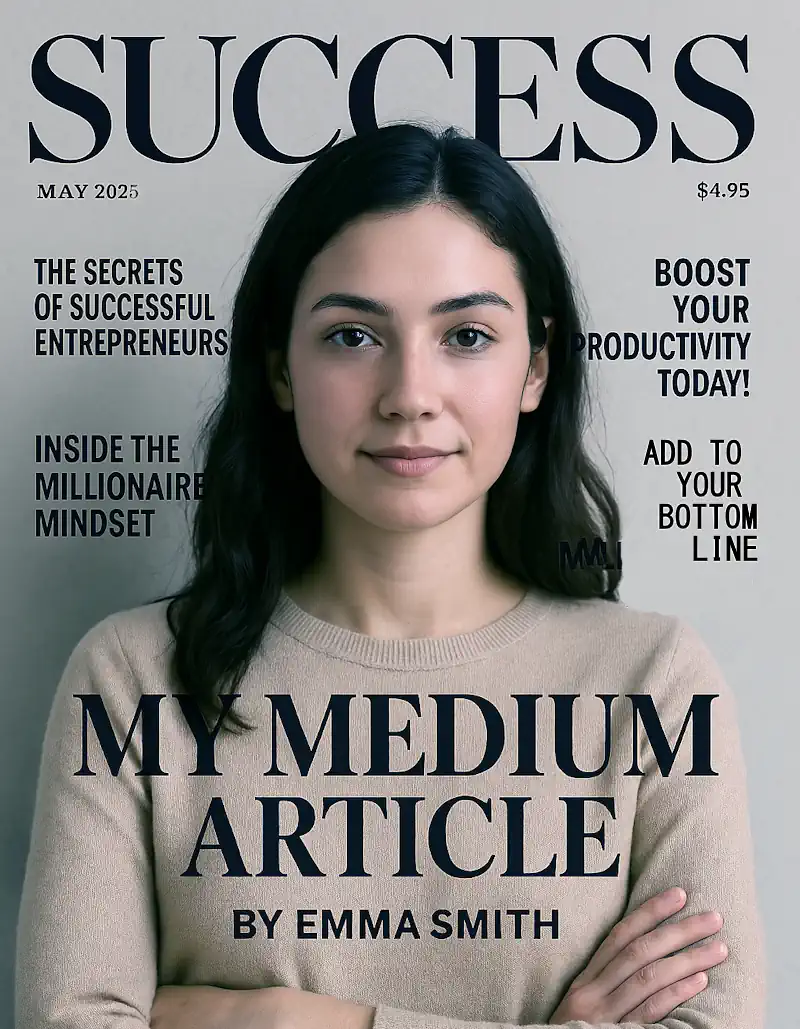
You need to write content that feels like it belongs in a professional magazine, not just a blog post. A strong structure, polished grammar, useful insight, and an angle that’s fresh all increase your chances of getting picked up. Being part of a respected publication also means more eyes, more shares, and more potential for future followers to stick around and read your other work.
*For strategies on getting your work featured in prominent publications, see Medium Networking Tactics To Amplify Your Content.
Beyond the Partner Program: Indirect Monetization
While the Partner Program is one option, many writers use Medium as a gateway rather than the final destination. It’s a powerful channel for indirect monetization. If you’re a service provider, consultant, or course creator, Medium becomes a way to build authority and attract leads without the hard sell.
You’re writing valuable content that answers questions your target audience already has. In doing so, you position yourself as the obvious next step when they’re ready to go deeper.
For example, if you’re a copywriter, writing an article like “5 Reasons Your Website Copy Isn’t Converting” not only educates readers, it subtly showcases your expertise. You can include a line at the end that invites readers to check out your site or download a free resource.
If the article performs well, it sends consistent traffic to your offer page without paying for ads or chasing social media trends. Medium’s readers tend to be thoughtful, curious, and willing to spend time exploring a good idea. That makes them perfect leads for digital products, coaching services, or educational offers.
Email List Growth Strategies
Another benefit is email list growth. You can place a call to action within your article that links to a lead magnet or opt-in page. Something like “Want the full checklist I use with clients? Grab it here” can convert well when placed in a high-performing article.
Because Medium doesn’t give you access to your followers’ email addresses, building your list off-platform is essential. It ensures that you own your audience and can stay in touch regardless of what happens to Medium down the line. Every article becomes a small funnel that brings readers into your world.
Sponsored Content Opportunities
Some Medium writers go even further and turn their visibility into sponsored content deals. If you build a reputation and grow a loyal audience, brands in your niche may approach you for partnerships.
This might include writing a dedicated piece about their product, featuring a brand mention in an existing article, or co-creating content that serves both your audiences. You don’t need millions of views to land these deals. What matters is that your content resonates with a specific group and that your readers trust your voice.
Writers in the productivity, entrepreneurship, tech, and personal finance spaces are particularly well-positioned for sponsorships because their audiences are already filled with buyers.
If you’ve built up a portfolio of strong-performing content and can show that your articles generate consistent engagement, that’s attractive to brands. Sponsorships might start small—free access to a tool or a couple of hundred dollars for a feature—but can scale into long-term partnerships if the collaboration works.
Proactive Sponsorship Outreach
You can also seek these deals out yourself. If there’s a brand you already use and believe in, write an article about your experience and tag them when you share it outside Medium.
Reach out directly with a short pitch and a few stats about your article performance. Keep it simple. The pitch might be as basic as, “I write for a business-minded audience on Medium and consistently get over 5,000 reads per month. I’d love to explore how we might feature your tool in a relevant article.” Brands are often open to micro-influencer partnerships when they align with the right audience.
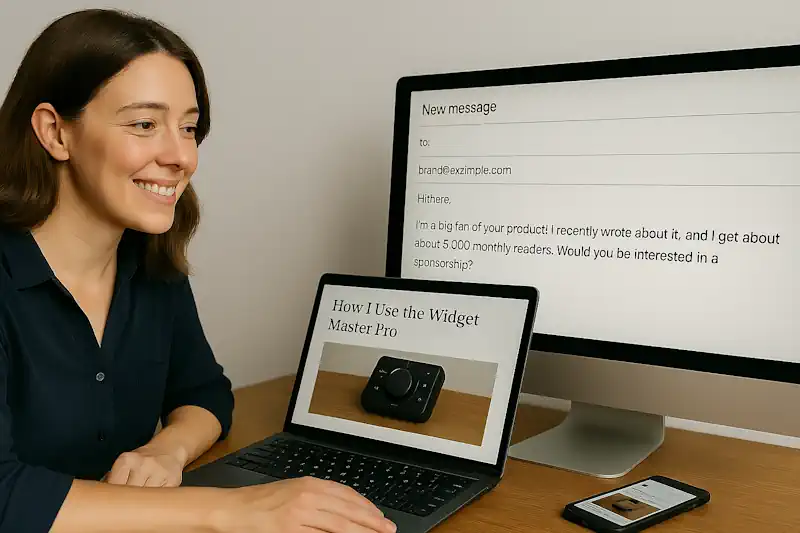
Collaborative Revenue Opportunities
Collaborative opportunities are also possible. As your presence grows, you may be invited to co-author articles, contribute to group Series, or participate in Medium-based writing challenges that get shared by large publications.
These collaborations increase your exposure and help you build credibility with new audiences. Each collaboration is another way to funnel readers back to your profile and your business assets.
Webinars and Live Events
Medium articles can serve as effective funnels for higher-value live offerings:
- Free webinars: Expand on popular Medium topics in an interactive format
- Q&A sessions: Answer questions related to your expertise area
- Workshops: Provide hands-on implementation of concepts covered in your articles
- Meetups: Create communities around topics you write about
These events build deeper relationships with your audience while providing opportunities to present more substantial paid offerings.
Consulting and Coaching Services
Medium establishes your expertise in a way that makes consulting or coaching services a natural next step:
- Mention availability: Briefly note your consulting services when relevant
- Case studies: Share anonymized results from client work
- Problem-solving articles: Demonstrate your process for addressing specific challenges
- Decision frameworks: Show how you help clients make better choices
The key is demonstrating your methodology and results rather than simply stating that you offer services. Let readers see how you think before asking them to hire you.
Creating Digital Products for Medium Readers
Medium readers are often willing to invest in learning resources that expand on the free content they enjoy. Consider creating digital products specifically for your Medium audience:
- PDF guides: Expanded versions of your most popular articles
- Templates: Practical tools readers can implement immediately
- Workbooks: Interactive versions of your frameworks or methods
- Mini-courses: Email-delivered training expanding on your Medium topics
- Resource libraries: Collections of tools mentioned across your articles
These products can be priced anywhere from $7 to $97, depending on depth and value, forming an entry point into your broader business ecosystem.
Strategic Product Mentions
When referencing your products or services in Medium articles, follow these guidelines for maximum conversion without appearing promotional:
- Context is everything: Only mention offerings that directly relate to the article topic
- Value first: Ensure the article delivers complete standalone value before mentioning your product
- Natural placement: Integrate mentions where they logically fit the content flow
- Clear benefit statement: Explain what readers will gain, not just features
- Non-pushy language: Use “if you’re interested” rather than aggressive calls to action
Medium readers value authenticity and resist obvious sales tactics. Position offerings as helpful extensions rather than the main purpose of your content.
Optimizing Your Monetization Mix
Rather than choosing a single monetization approach, most successful Medium writers employ a strategic combination:
- Immediate revenue: Partner Program earnings
- Short-term revenue: Digital products, webinars, sponsored content
- Long-term revenue: Email list building, coaching/consulting services, broader platform building
Allocate your Medium efforts proportionally based on your business goals and timeline. A writer focused on immediate income might put 80% of articles behind the paywall, while someone building a long-term business might make 80% of content free to maximize reach.
Medium’s monetization model isn’t as straightforward as platforms built around direct sales or display ads. But that’s also what makes it powerful. It rewards writing that holds attention. It supports content that’s crafted with care.
It gives you access to a built-in audience and lets you earn without pushing products aggressively. Whether you’re aiming for Partner Program payouts, building a lead funnel, attracting sponsors, or growing your business visibility, Medium gives you the leverage of trust, attention, and reach.
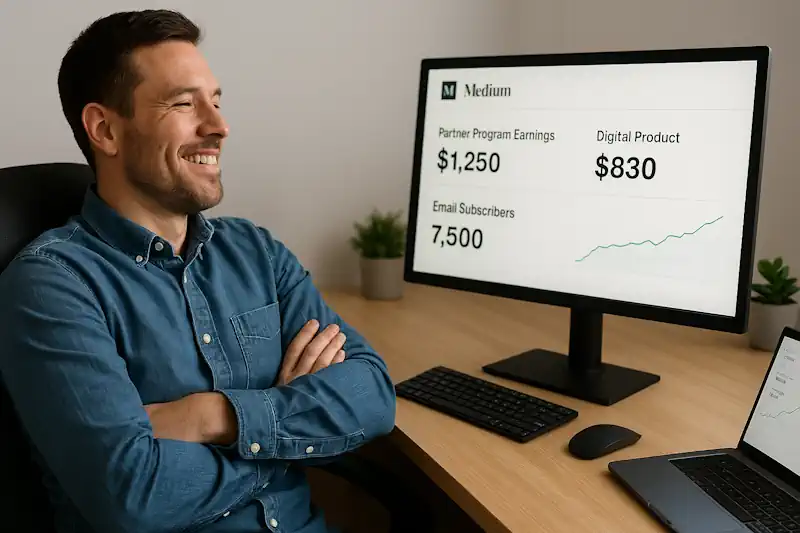
The income might start small, but with the right strategy, it scales. One great article can pay you for months. One great relationship can lead to new deals. One strong body of work can fuel every other part of your business.
This was part 9 of our Medium marketing series. Next in our series: Medium Mastery: Advanced Strategies– Take your Medium strategy to the next level with advanced techniques and optimizations. Or return to the intro and the full series’ Table of Contents.
